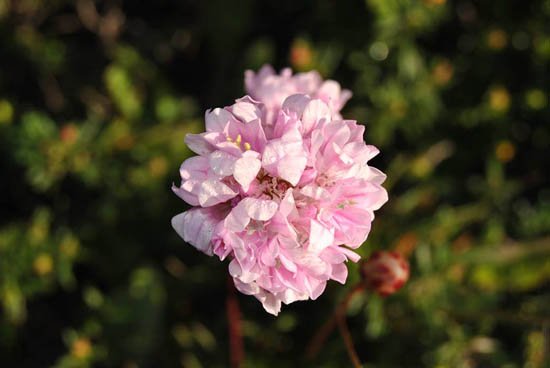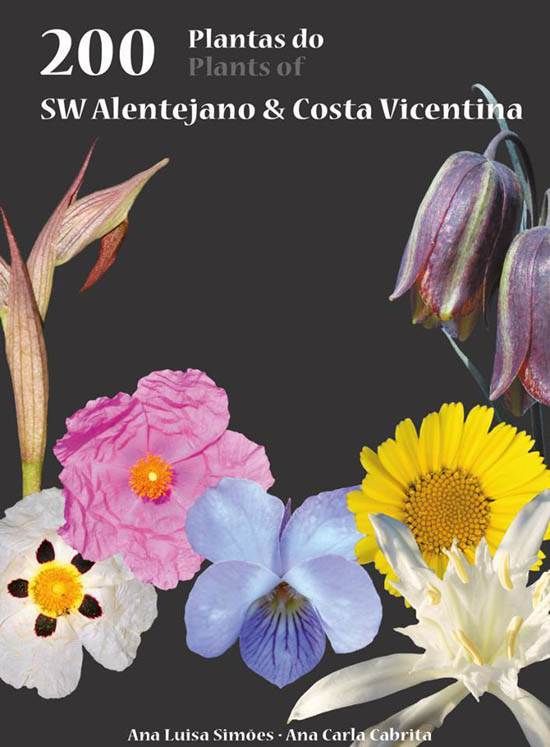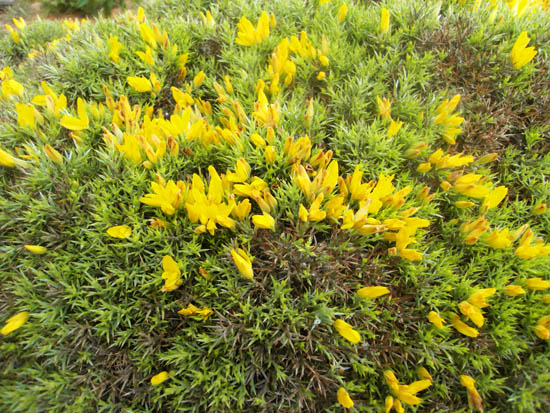 The book “200 Plantas do SW Alentejano & Costa Vicentina”, the first flora guide for this Portuguese area, has just been launched, in a bilingual edition – Portuguese and English.
The book “200 Plantas do SW Alentejano & Costa Vicentina”, the first flora guide for this Portuguese area, has just been launched, in a bilingual edition – Portuguese and English.
It intends to be an introduction to the flora of the Portuguese Southwest, aimed at the general public, and presents 200 of the approximately 1000 plants on the southwest coast.
The guide consists of cards with a photograph of each plant, the scientific name of the species, the botanical family, common names in Portuguese and English and a brief description. It also includes a legend, where information is given about the height of the plant, the flowering period, the vegetative cycle, the habitat and the protection status. The cards are organized by flower color, facilitating identification in the field.
It is a work by Ana Luísa Simões and Ana Carla Cabrita who, over the past two years, have dedicated themselves to photographing, investigating and compiling all the information relating to the plants presented in the work.
Ana Carla Cabrita told the Sul Informação that «all the research, writing and graphic design work was done over about two years. Several photographs were taken during these years, but many of them were already part of a personal archive, with the aim of compiling information on the matter».
«Ana Luísa Simões, from Porto, but moving to Costa Vicentina, and with a lot of knowledge of botany, called me one day to propose that we write the guide together and we set to work. From there, he went to research, go into the field, write, revise, translate, photograph, etc. We had the precious help of Colonel José Rosa Pinto, a professor at the University of Algarve, who came to us to go together to the field to identify plants», added the author.
 The project to create the “Guide to the “200 Plants from Southwest Alentejo & Costa Vicentina” emerged “from the feeling of a gap in terms of the offer of popularization publications that represent the flora of this territory, capable of helping professionals in tourism, entertainment and environmental education, and encouraging the approximation of inhabitants to natural areas. We understand that the dissemination of natural values is fundamental, since only by knowing and respecting will we know how to protect», explained Ana Carla Cabrita.
The project to create the “Guide to the “200 Plants from Southwest Alentejo & Costa Vicentina” emerged “from the feeling of a gap in terms of the offer of popularization publications that represent the flora of this territory, capable of helping professionals in tourism, entertainment and environmental education, and encouraging the approximation of inhabitants to natural areas. We understand that the dissemination of natural values is fundamental, since only by knowing and respecting will we know how to protect», explained Ana Carla Cabrita.
The authors stress that “the Southwest Coast is one of the last and most important stretches of wild coastline in southern Europe”. The immense wealth, flora and fauna of the region was recognized with the creation of the status of Natural Park, at national and European level, with the inclusion in the List of Sites of Community Importance, as a Special Conservation Area. «This image of a natural area that has not been altered and surprisingly well preserved has led to an increase in the number of visitors interested in nature tourism», an area in which Ana Carla Cabrita works.
Among the threats that hang over the flora of the Southwest Coast, «in our view, and according to what we learned from documents, the most important are those resulting from urban-tourism expansion. There will have to be a truly sustainable development so that loading and trampling do not make many species existing here disappear”, said the author. But, he warns, "the illegal extraction of sand and the destruction of dunes are also destructive factors."

Although she assures that it is «difficult to highlight a plant, because the wealth of the Portuguese Southwest is, in fact, impressive», Ana Carla Cabrita also points out the case of «plantago almogravensis, extremely rare and in regression, a plant of which only one nucleus is known along the entire coast of the PNSACV, and the Ulex Erinaceus (Tojo-de-Sagres), an endemism of the Sagres Biogenetic Reserve, whose formations, together with the Straw cistus, constitute a rare and priority habitat for conservation under the NATURA 2000 NETWORK (Dec. Law No. 49/2005 of 24/02)».
And why these 200 plants and not others? «We tried to choose plants that were more common to observe, since this is a field guide for those who want to identify what most commonly comes to our eyes. But we also wanted to include some endemisms, whether local, national or Iberian, in order to highlight the immense wealth of our Southwest. Many plants were left aside, but we wanted to lay a foundation stone so that other guides could emerge».
Ana Carla Cabrita, born in Sagres, is a Nature Guide on the Costa Vicentina and occasionally collaborates in environmental projects. Ana Luísa Simões, born in Porto and living in Odemira, has been working in recent years in the area of Animation and Environmental Education in protected areas in France, where she deepened her knowledge of Mediterranean flora.
From today, the 25th of December, it will also be on sale at FNAC da Guia and in the future at FNAC de Faro. It will also be in these two FNAC stores that the authors will make public presentations of the book, on the 24th and 25th of January, at 16 pm, in Faro and in the Guide, respectively.
The Guide received monetary support from the Regional Directorate of Culture of the Algarve and the purchase of books by four Municipal Councils (Vila do Bispo, Aljezur, Odemira and Sines), which «showed immediate openness to support us by purchasing the guides. It was this money that allowed us to pay for the printing of 2000 copies».


















Comments